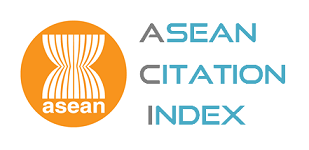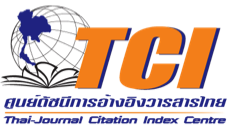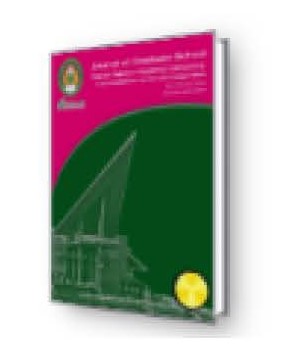การพัฒนายุทธศาสตร์การจัดการการเรียนรู้คณิตศาสตร์โดยบูรณาการทฤษฎีการสร้างความรู้และทฤษฎีการเรียนรู้ของบรูเนอร์เพื่อเสริมสร้างผลสัมฤทธิ์ทางการเรียนและความคิดสร้างสรรค์ทางคณิตศาสตร์ของนักเรียนระดับประถมศึกษาปีที่ 6
Abstract
บทคัดย่อ
การวิจัยครั้งนี้มีวัตถุประสงค์เพื่อ 1) พัฒนายุทธศาสตร์การจัดการการเรียนรู้คณิตศาสตร์โดยบูรณาการทฤษฎีการสร้างความรู้และทฤษฎีการเรียนรู้ของบรูเนอร์ 2) ศึกษาผลการใช้ยุทธศาสตร์การจัดการการเรียนรู้โดยบูรณาการทฤษฎีการสร้างความรู้และทฤษฎีการเรียนรู้ของบรูเนอร์ ดำเนินการวิจัยเป็น 3 ระยะได้แก่ ระยะที่ 1 ศึกษาสภาพและปัญหาการจัดการการเรียนรู้คณิตศาสตร์ของนักเรียนระดับประถมศึกษา จากแนวคิด ทฤษฎีและเอกสารที่เกี่ยวข้อง และการสัมภาษณ์ผู้เชี่ยวชาญและครูผู้สอน ระยะที่ 2 พัฒนายุทธศาสตร์การจัดการเรียนรู้ จากการสังเคราะห์ข้อมูลที่ได้ในระยะที่ 1 มาสร้างเป็นยุทธศาสตร์แล้วตรวจสอบคุณภาพโดยผู้เชี่ยวชาญ ระยะที่ 3 ศึกษาผลการใช้ยุทธศาสตร์การจัดการการเรียนรู้ โดยนำไปทดลองใช้ กลุ่มตัวอย่างที่ใช้ในการวิจัย ครั้งนี้ เป็นนักเรียนชั้นประถมศึกษาปีที่ 6 ใน ภาคเรียนที่ 1 ปีการศึกษา 2557 โรงเรียนชุมชนบ้านซาง สังกัดสำนักงานเขตพื้นที่การศึกษาประถมศึกษาบึงกาฬ จำนวน 2 ห้องเรียน โดยสุ่มตัวอย่างแบบกลุ่ม (Cluster Random Sampling) และสุ่มห้องเรียนโดยวิธีการจับฉลากเพื่อจัดเป็นกลุ่มทดลอง 1 ห้องเรียน และกลุ่มควบคุม 1 ห้องเรียน โดยมีนักเรียนห้องเรียนละ 30 คน ใช้ระยะเวลาในการทดลองในภาคเรียนที่ 1 ปีการศึกษา 2557 รวมเวลา 9 สัปดาห์ สัปดาห์ละ 4 ชั่วโมง โดยกลุ่มทดลองได้รับการจัดการการเรียนรู้ตามยุทธศาสตร์การจัดการการเรียนรู้ที่พัฒนาขึ้น กลุ่มควบคุม ได้รับการจัดการเรียนรู้ ตามแบบปกติ เครื่องมือที่ใช้ในการวิจัยประกอบด้วย 1) แผนการจัดการเรียนรู้ 2) แบบทดสอบวัดผลสัมฤทธิ์ทางการเรียนวิชาคณิตศาสตร์ 3) แบบทดสอบวัดความคิดสร้างสรรค์ทางคณิตศาสตร์ 4) แบบวัดเจตคติต่อการเรียนวิชาคณิตศาสตร์ ใช้แบบแผนการทดลองแบบ pretest - posttest control Group design วิเคราะห์ข้อมูลโดยการหาค่าเฉลี่ย ร้อยละ ส่วนเบี่ยงเบนมาตรฐาน และการทดสอบที (t-test)
ผลการวิจัยสรุปได้ดังนี้
1. ผลการพัฒนายุทธศาสตร์การจัดการการเรียนรู้คณิตศาสตร์โดยบูรณาการทฤษฎีการสร้างความรู้และทฤษฎีการเรียนรู้ของบรูเนอร์ ทำให้ได้ยุทธศาสตร์การจัดการการเรียนรู้ที่มีหลักการตามแนวคิดทฤษฎีการสร้างความรู้และทฤษฎีการเรียนรู้ของบรูเนอร์ ประกอบด้วย 5 ส่วนคือ 1) จุดมุ่งหมายของยุทธศาสตร์ 2) แนวคิดทฤษฎีพื้นฐาน 3) หลักการของยุทธศาสตร์ 4) องค์ประกอบของยุทธศาสตร์ด้านกระบวนการเรียนรู้ ประกอบด้วยขั้นตอนการเรียนรู้ 5 ขั้น ได้แก่
ขั้นสร้างแรงบันดาลใจ ขั้นแสวงหาความรู้ใหม่ ขั้นค้นพบความรู้ ขั้นฝึกปฏิบัติคิดสร้างสรรค์ ขั้นประยุกต์ใช้แนวคิด องค์ประกอบด้านการจัดสภาพแวดล้อมภายในและภายนอกห้องเรียนและ 5) การประเมินผลยุทธศาสตร์ ผลการประเมินยุทธศาสตร์การจัดการการเรียนรู้จากผู้เชี่ยวชาญมีความเหมาะสมอยู่ในระดับมาก
2. ผลการใช้ยุทธศาสตร์การจัดการการเรียนรู้ พบว่า 1) กลุ่มทดลองมีคะแนนผลสัมฤทธิ์ทางการเรียนเฉลี่ยหลังเรียนสูงกว่ากลุ่มควบคุม และคะแนนที่ได้ไม่น้อยกว่าเกณฑ์ร้อยละ 75 2) กลุ่มทดลองมีคะแนนความคิดสร้างสรรค์ทางคณิตศาสตร์เฉลี่ยหลังเรียนสูงกว่ากลุ่มควบคุม และคะแนนที่ได้ไม่น้อยกว่าเกณฑ์ร้อยละ 75 3) กลุ่มทดลองมีคะแนนเจตคติต่อการเรียนวิชาคณิตศาสตร์เฉลี่ยหลังเรียนสูงกว่ากลุ่มควบคุมและอยู่ในเกณฑ์ระดับค่อนข้างดี
ABSTRACT
The purposes of this research were: 1) to develop strategies for designing mathematics learning through integrating constructivist theory and the theory of Bruner 2) to study the results of using the strategy of designing learning through integrating constructivist theory and the theory of Bruner. This research is carried out in three phases as follows: Phase 1 Study the situation and problems of designing the mathematical learning of primary school children from theoretical trends and literature related to mathematics achievement and creativity, Interview key experts on math education and math teachers. Phase 2 Based on integrating the data from phase I, develop strategies for designing learning. Have experts critique the strategies developed during phase II. Phase 3 Research the results of actually using an integrated theory of constructivism and Bruner by experimentally testing the strategy. The group for this study are 6th grade students in the Ban Sang Community School studying during the first term of the academic year 2014. The School is under the Local Educational Area of Beung Kan. There are two classrooms with a total of 60 students. This represents a cluster random sample. Students were randomly assigned to an experimental and a control group. The period of the experiment was for nine weeks, with four hours of instruction each week. The experimental group was taught using the special strategies developed. The control group was taught using the ordinary normal curriculum. There were four instruments used in the study, namely : 1) The lesson plans for instruction 2) Mathematics achievement test. 3) An instrument for measuring mathematical creativity 4) An instrument to measure attitudes toward the subject of mathematics. The basic research design for the study was a classic pretest-posttest control group design.
Summary of Findings
1.The strategy, A major result of this research is the development of a strategy for designing math learning based on a constructivist and Bruner theoretical paradigm with the following five key elements: 1) The goals of the strategy 2) Basic theoretical foundations 3) Basic principles of the strategy 4) Factors and process of the learning strategy beginning with five levels of learning, namely: Building motivation and inspiration to learn. Discovering new knowledge. Searching for knowledge. Practicing innovative thinking. Utilizing that new knowledge in designing both internal and external environments 5) Evaluating the strategy
2. Results In assessing the results of using the strategy there were three major findings : 1) The experimental group at the end of the test period had higher mathematical achievement than the control group and was above the standard achievement of 75.0. 2) The experimental group also had higher levels of mathematical creativity than the control group and was above the standard level of 75.0 3) The experimental group also had higher levels of mathematical attitude than the control group and more positive attitude.
Downloads
How to Cite
Issue
Section
License
บทความทุกบทความที่ตีพิมพ์ในวารสารบัณฑิตศึกษา มหาวิทยาลัยราชภัฏสกลนคร ถือว่าเป็นลิขสิทธิ์ของบัณฑิตวิทยาลัย มหาวิทยาลัยราชภัฏสกลนคร









